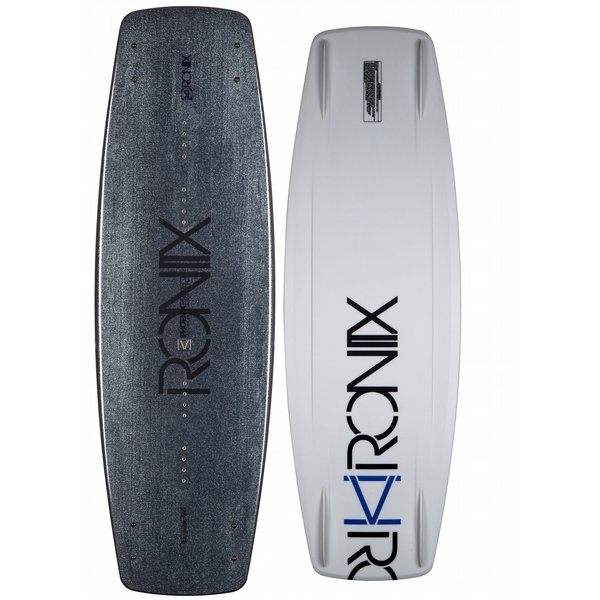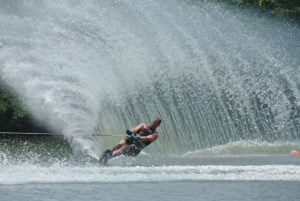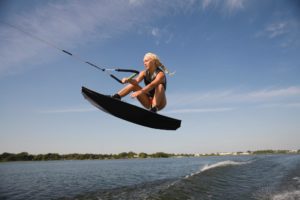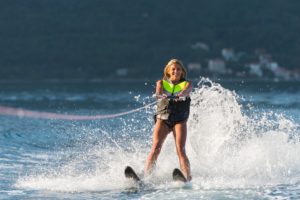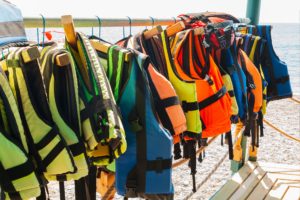Hi, my name is Eric Ruck. I’m an ex-world champion and an ex-pro tour champion. I’m just someone that loves to be on the water. Back in the day, we were all together and I got an opportunity to join the Ronix team. Things just happened to work out and it’s just a blessing that I get to work and ride with the guys that most feel like family. So, kind of timing wise, everything worked out to a T, because, basically, the pioneers of flex boards were working on a new project. It just happened that I was able to work with them and we got the Phoenix Project.
 The whole flex board thing is, basically, the direction that I have been slowly gravitating toward, just more or less the Wake Park and, more or less, a versatile way of riding. When I was riding this board, I could actually feel the transfer of the energy going from the nose of the board to the tail of the board the longer I waited as I was cutting through the wake. If you’ve never ridden a flex board before, the feeling is a little bit more of a free feeling. It’s a later pop, more of an Ollie-style board, rather than an edge-through-the-wake-style board. You’re going to kind of have a little more of a snowboard feel where you’re a little later on the pop, feeling the energy transfer from the nose to the tail. And you have more of a snappy pop, rather than creating pressure through the boat-and-rope pop.
The whole flex board thing is, basically, the direction that I have been slowly gravitating toward, just more or less the Wake Park and, more or less, a versatile way of riding. When I was riding this board, I could actually feel the transfer of the energy going from the nose of the board to the tail of the board the longer I waited as I was cutting through the wake. If you’ve never ridden a flex board before, the feeling is a little bit more of a free feeling. It’s a later pop, more of an Ollie-style board, rather than an edge-through-the-wake-style board. You’re going to kind of have a little more of a snowboard feel where you’re a little later on the pop, feeling the energy transfer from the nose to the tail. And you have more of a snappy pop, rather than creating pressure through the boat-and-rope pop.
The one thing that’s cool about this board when you land is it that the energy is carrying through it and also it has a lot of rigidity to it. So, you’re landing and you’re not feeling done, you’re actually speeding up. It has a lot of coast to it. Like, when you take a whip on this thing, you can feel it speeding up as you kind of get slack, rather than slowing down like a three-stage board would. One of the reasons this board has a very smooth landing is that it’s controlled flex. A lot of flex boards are super loose when you land and they get a little sketchy. This board lands and tracks and just lands like a normal weight board. One of the cool things about the blended glass is that you can actually feel the energy being transferred through the board as you’re riding it. When you’re pressing the board and you’re up on your nose, you can actually feel the balance point of where the board flexes and catches itself. Also, when you’re edging through the wake, you can feel the energy transfer from the nose through the tail as you’re loading the back of the board. It also has a unique, beveled edge which tapers into a hard, fast rail which is good for wake riding and cable riding. Well, on a normal wake board, when you’re allying up onto a rail, more or less what you feel is you ally up and kind of rock the board into position to press. You’re more or less pivoting on the board, rather than pressing. On the Phoenix what you’re feeling is, when you ally into a rail and you go for a press, you’re allying into the press and the board is flexing. You’re hitting your balance point and you’re feeling the energy of the board locking you into that press, rather than just pivoting against the rail. The proven sintered base is the most durable bottom without a lot of drag on the water. The board comes with eight fins; one set of four is a narrower profile for riding behind the boat, a little cleaner release of water. And, also, it comes with a rail fin that is a little bit wider, bulletproof on rails, and is designed for that skate-style rider. If you’re into a board that carries a lot of energy, has a late kick, and is super versatile on rails, the Phoenix Project is your board.
